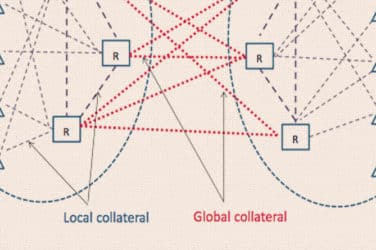
Collateral optimization and pricing tools are critical to profitability.
Regulations such as Basel III, Dodd-Frank, EMIR and MiFID II are spurring financial services firms to improve their return on capital.
The need to optimize collateral and leverage every margin offset opportunity will become more pressing as the new capital charges take hold.
“Regulatory changes are transforming the OTC derivatives space, from execution to settlement,” said Peter Banham, head of strategy for SunGard’s capital markets business. “Market participants need to manage large volumes of data in order to clear and process trades. New pressures on the cost and the more effective use of capital make it more important to have automated and real-time capital controls.”
Collateral management, once a backwater of post-trade processing, has leaped into the spotlight with regulatory reforms that require many OTC derivatives to be centrally cleared.
The Dodd-Frank Act has generated numerous rules proposed by the CFTC on protection of collateral for cleared swaps, as well as provision of collateral for uncleared swaps. That, in turn, has upped the ante for maximizing the efficiency of collateral management.
The upshot is that asset managers, even the largest ones, will be looking to outsource their collateral management operations, which have traditionally been done in house, and banks in turn are building out collateral management infrastructure and technology to handle the expected increase in cleared swaps.
“While banks continue to struggle with unanswered questions about OTC derivatives and collateral management, they are investing for a range of potential client solutions, including plug and play options,” said Josh Galper, managing principal of Finadium, in a Nov. 2011 report.
One effect of the rise in collateral costs is that banks will pay more attention to the cost of collateral at a transaction level pre-deal as part of pricing calculations, according to a SunGard whitepaper.
Rather than the general cost of collateral being absorbed by the bank at a group-wide or division-side level, banks will allocate these costs to individual trading desks.
In order to do this, banks will need a much more granular level of reporting that’s able to drill down to every transaction and the collateral used. “Clearing houses and market participants will require a consolidated view of collateral assets and margin movements to manage new pressures on margin and liquidity as well as new regulatory requirements for collateral,” said Banham.
Just as credit valuation adjustments (CVAs) are used to capture the credit risk implications of individual trades, banks are also looking to factor in the collateral funding implications of those trades. Collateral funding costs can then be built into the pricing of the trade.
CVA, a measure that adjusts the risk-free value of an instrument to incorporate counterparty credit risk, is a complex challenge for a trading desk to quantify and manage due to its cross-asset and credit contingent nature.
Following the credit crisis, many firms began to centralize the pricing and management of counterparty credit risk in the form of a CVA trading desk that acts as an internal service for quantifying credit risk across individual business lines and using CVA to manage this risk across the entire institution.
Existing trading systems are ill-suited to CVA measurement, as they often process only a subset of all the trades with counterparty, lack the ability to model netting and collateral agreements, and lack the analytical capability to calculate sensitivities which are required for CVA.
According to the ISDA Margin Survey 2011, there are roughly 150,000 collateral agreements outstanding for OTC derivatives, with an estimated 220,000 CSAs.
Of these, only 15 percent are currently outsourced to bank service providers, with the rest either managed by broker-dealers or by end-users using spreadsheets.
BNP Paribas Securities Services is extending its collateral management service to include centrally-cleared OTC derivatives. The service, which will be fully operational in early 2012 and delivered via a real-time view of both centrally and bi-laterally cleared trades, helps institutional investors manage both collateral and risk measurement across multiple counterparties – dealers, clearers and central counterparties – and changing eligibility requirements.





